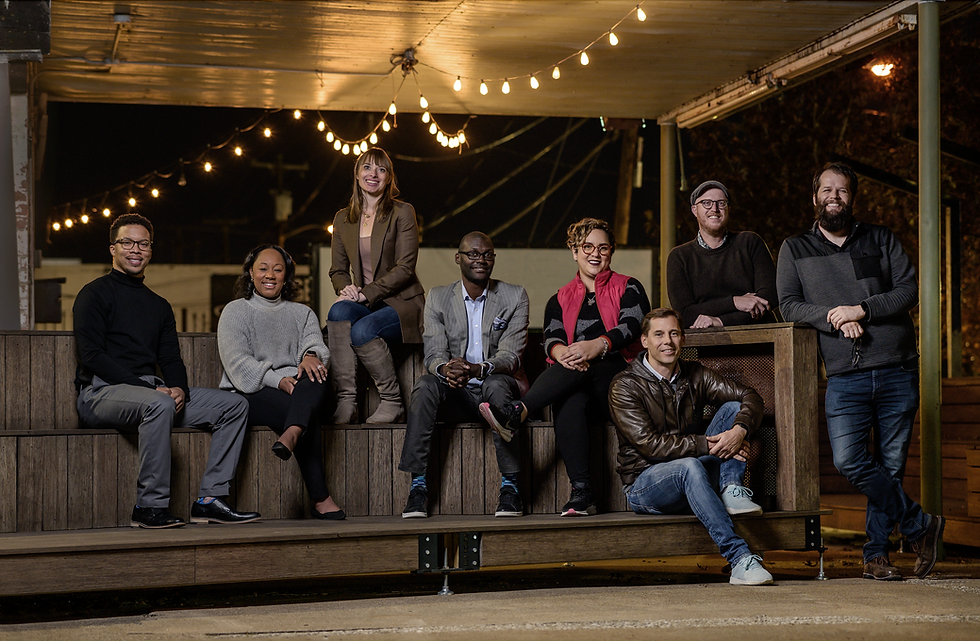The Better Block Approach to Urban Planning
- Admin
- Jul 24, 2013
- 3 min read
Updated: Jul 30, 2019
The Old Economy dictates a planning process that is very top down, relies on expert and specialist recommendations and takes a long time to implement and is dependent heavily on government subsidies. Conversely, the New Economy is demanding a planning process that has immediate results and combines the knowledge of generalist and experts. Lets compare the new and old approaches using the Vickery Meadow TOD plan in Dallas, TX and Arts and Design District plan in Norfolk, VA.
OLD ECONOMY, Step 1: Have a public meeting in a townhall, draw a lot of circles and arrows and call it community input.

Create a 10,000 foot map of the area and call for new infrastructure, new government districts and define where private development should go.

OLD ECONOMY, Step 3: Create photo renderings of “complete streets”… Fear of change kept the 8ft tall fences in place and no improved bicycle or pedestrian space.

OLD ECONOMY, Step 4: Create an action list that is totally dependent on agencies within local government and the mysterious “development community” to lead.

Conversely, lets look at the better block process recently used in Norfolk, VA for their Arts and Design District.
New Economy, Step 1: Move the public meeting from the townhall to the streets and a large and diverse group of people attend.

New Economy, Step 2: Create a plan for a block that reflects what people say is missing from the area.

New Economy, Step 3: Remove the fear of change by posing the visioning for the area into a weekend. Want to narrow a street to include a cycle track? It is much less intimidating to try this over a weekend than to put it into a photo rendering and have worst case scenario fears about what will happen to traffic. Then test it. We have found the fear is removed and worst case scenarios do not materialize.

New Economy, Step 4: Traditionally, we built our cities incrementally. Now we expect to do a plan and have superman come build utopia overnight. The fact is it takes dedicated citizens to lead the revitalization of our cities. We as planners must start involving generalist (moms, artist, nerds and everybody in-between) in the process and create action plan that empowers people to innovate in our city.

Things are moving forward in Vickery Meadow here in Dallas. Investors are interested and now we wait and see what happens. While in Norfolk, we saw a 15000 square foot building sale, sweeping zoning changes unanimously adopted, an existing business expand, one of the pop-up businesses become permanent and the city move to incrementally change the street to become more walkable.
This was not all from Better Block, but Better Block was the benchmark in the public planning process that everyone kept coming back to. City planners used the communities positive reaction in city hall to push policy. Real Estate agents used the pictures to market property that was otherwise forgotten. Young entrepreneurs drunk with the better block experience took the dive into converting pop up shops to real businesses. Artist felt empowered to create and get involved in making the place have a soul and be authentic. Traffic engineers used the data to justify street improvements.
Better block is not finale party, it is the start of a retraining of ourselves to build communities together. We need government and developers, but we should not wait on them or build a community plans around them only. The experiment continues and Team Better Block is eager to be back in Norfolk and a few other cities this fall to further test the approach. Watch for our next blog post were we will report outcomes from the last 9 better blocks across the country!




Comments